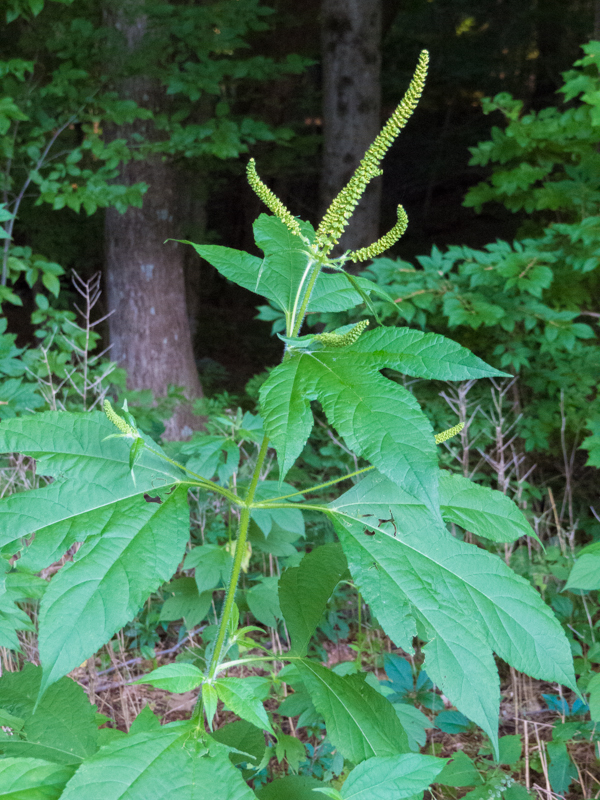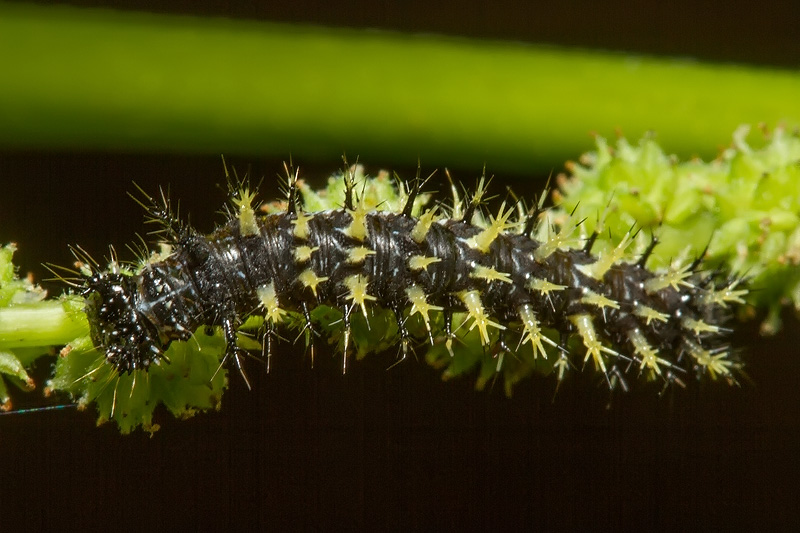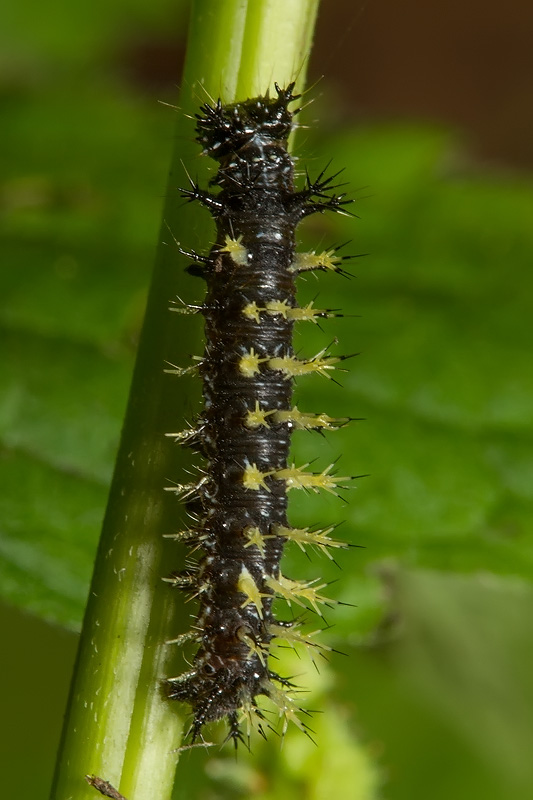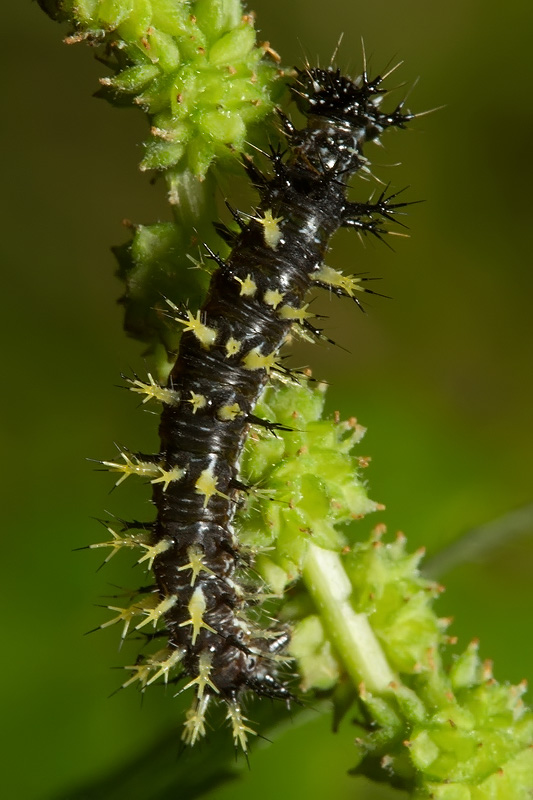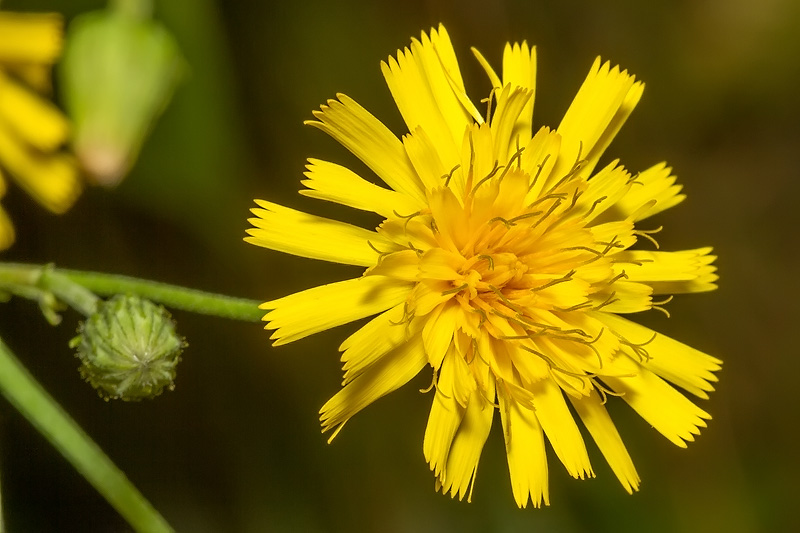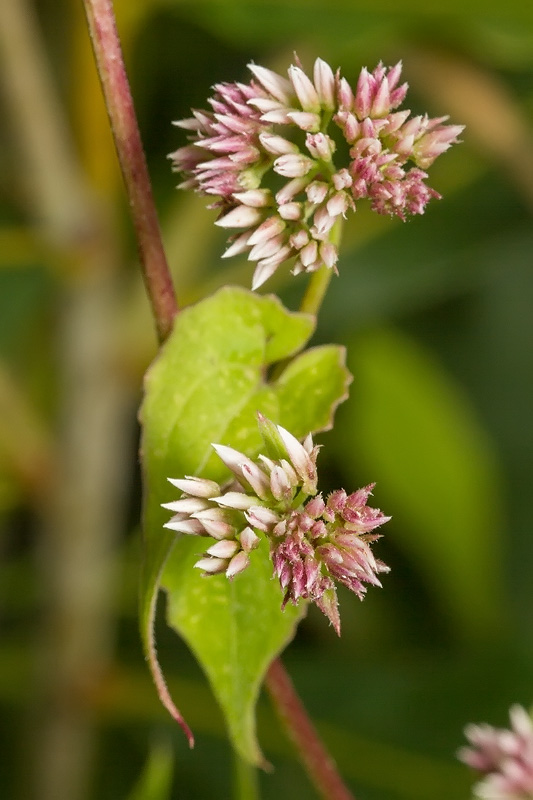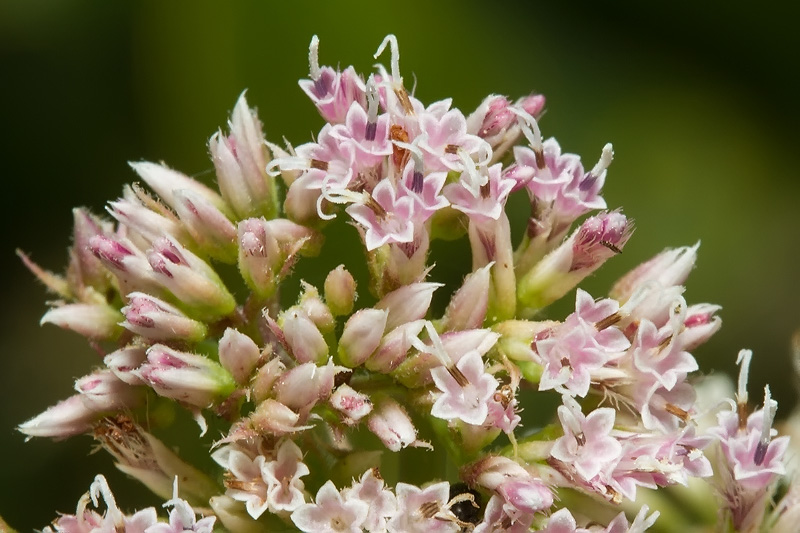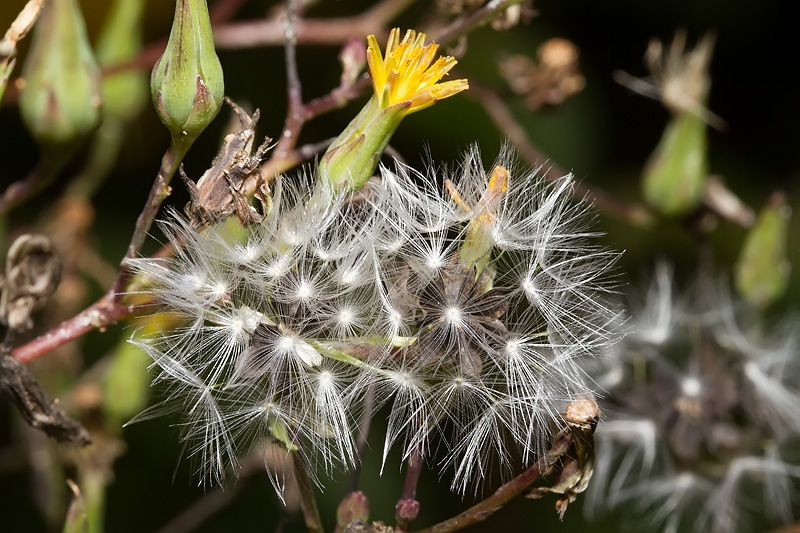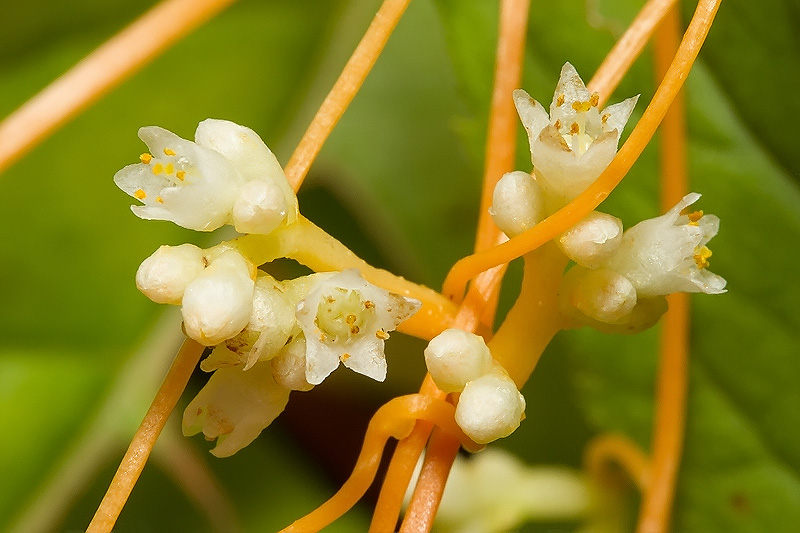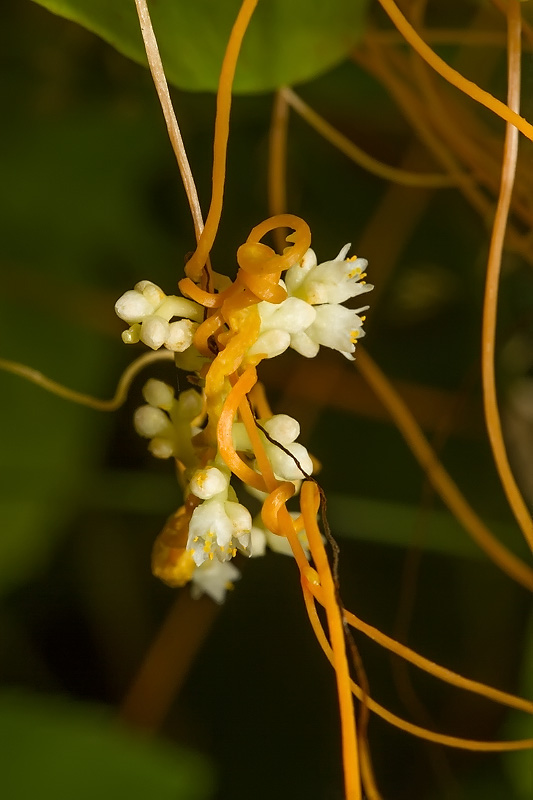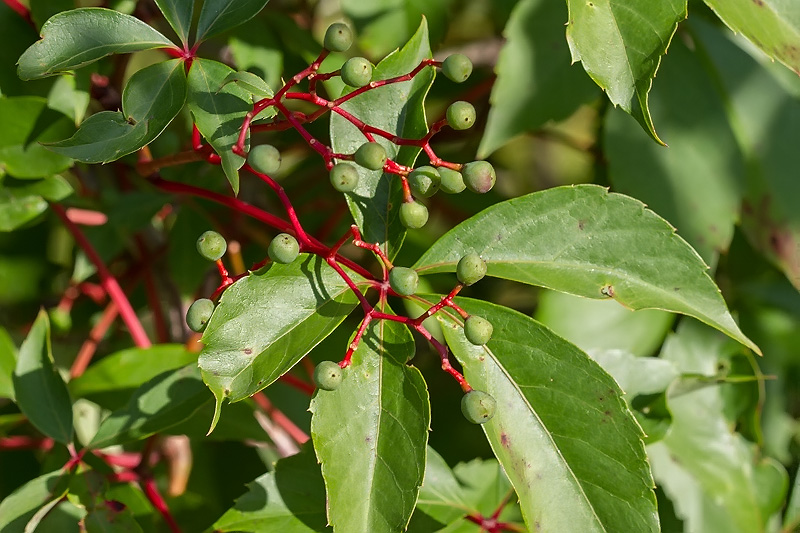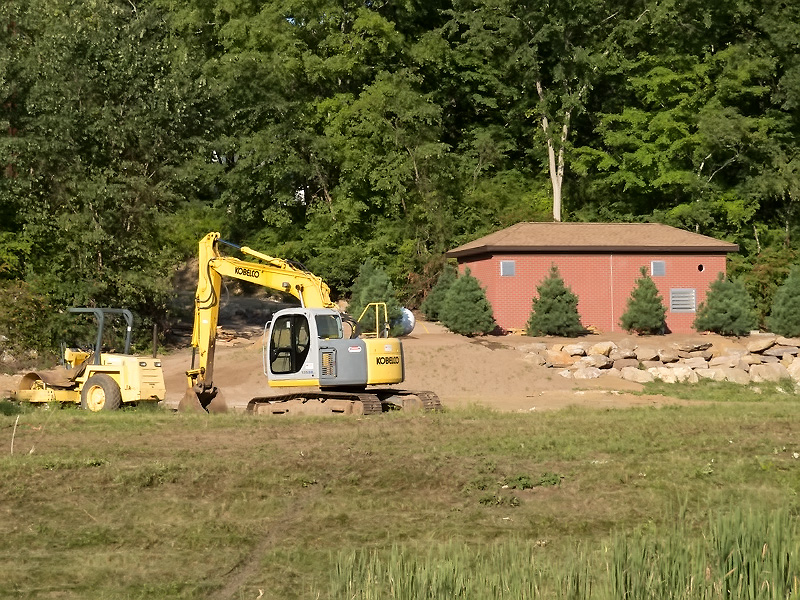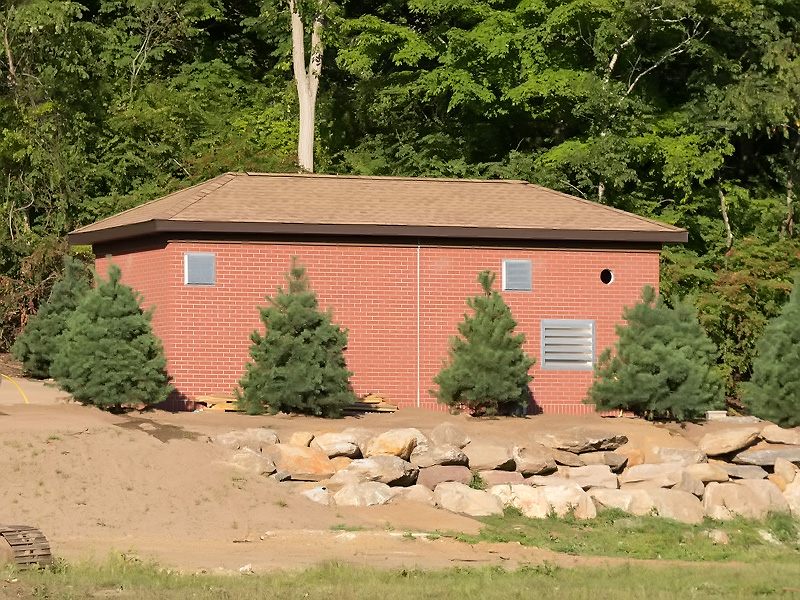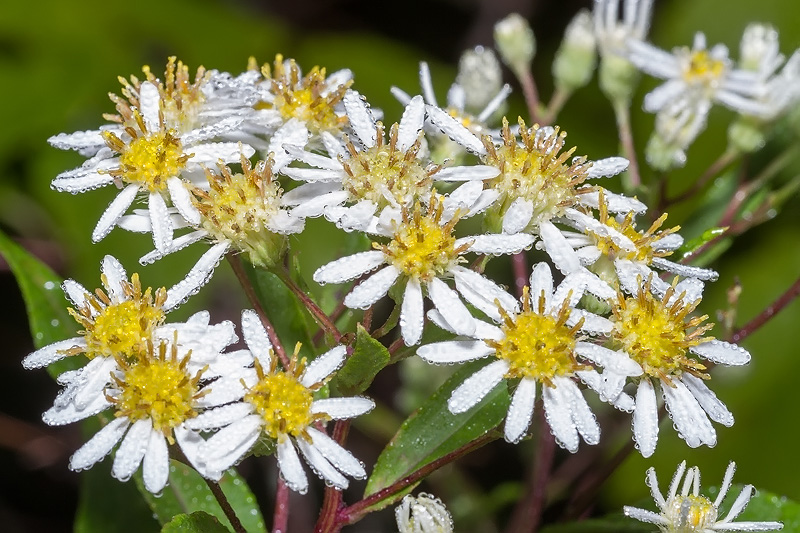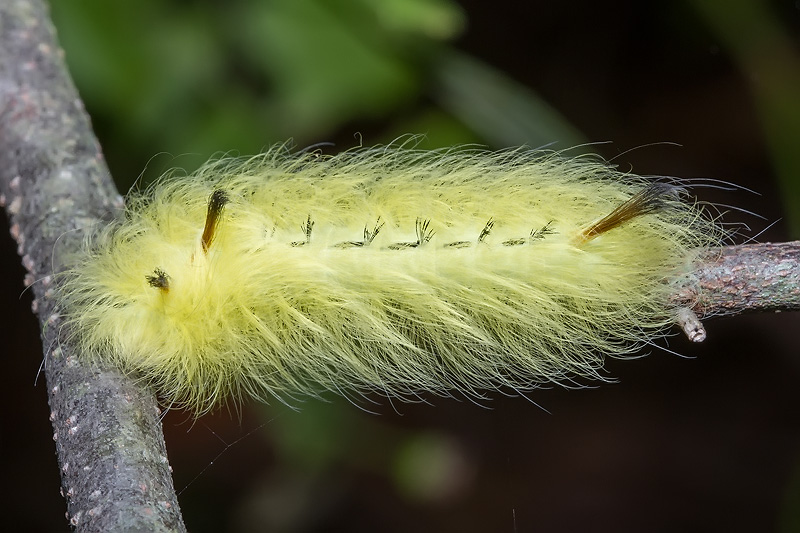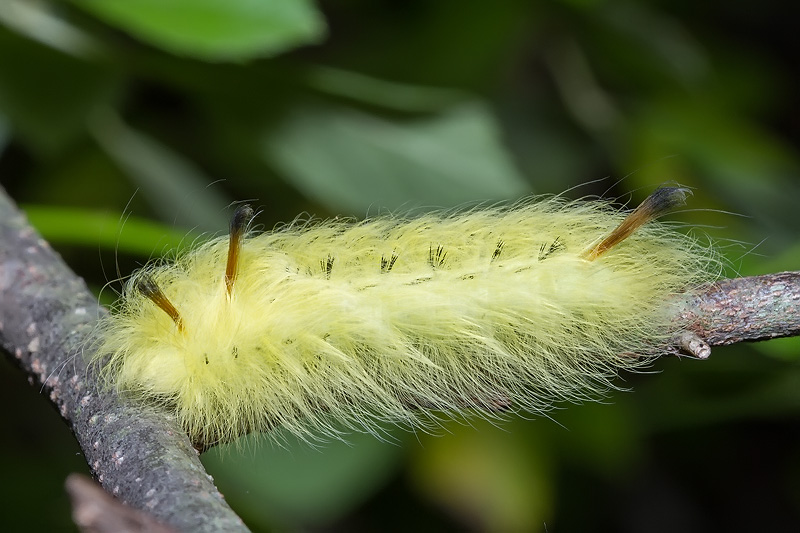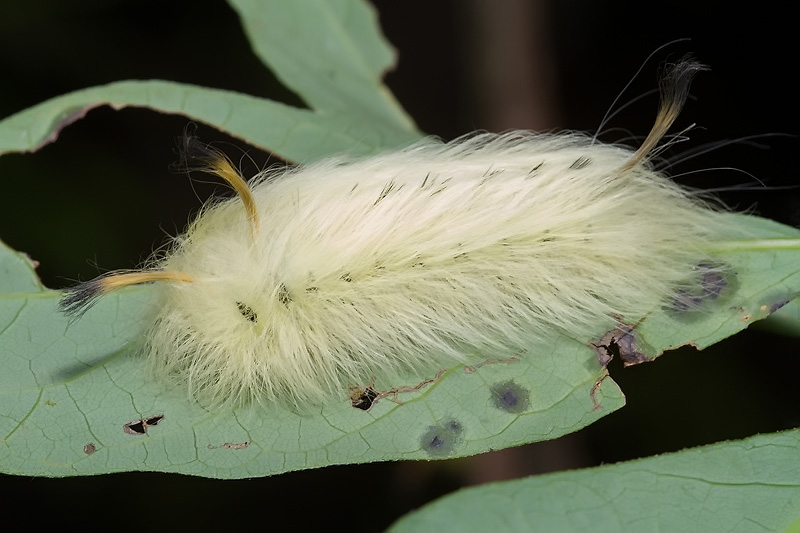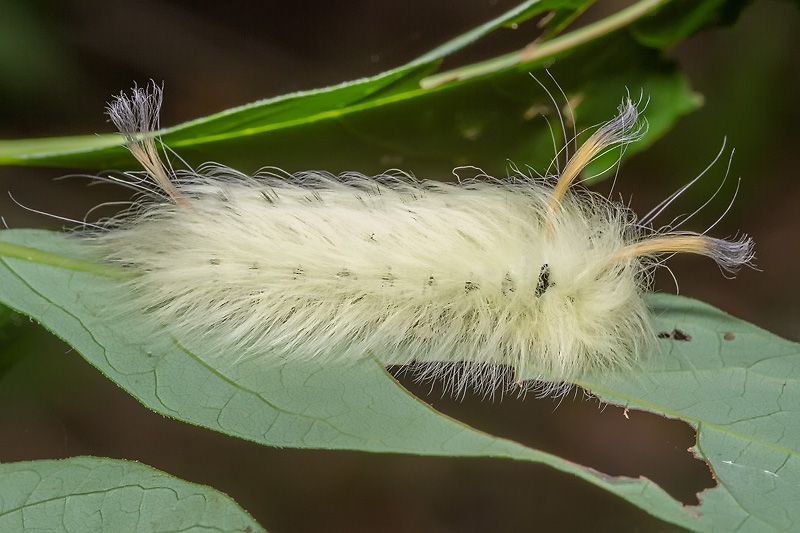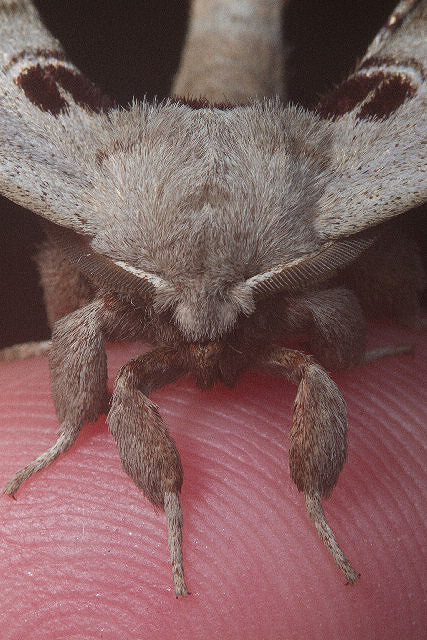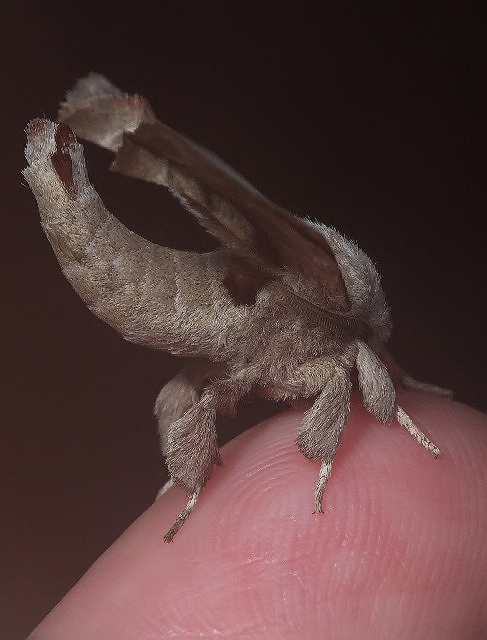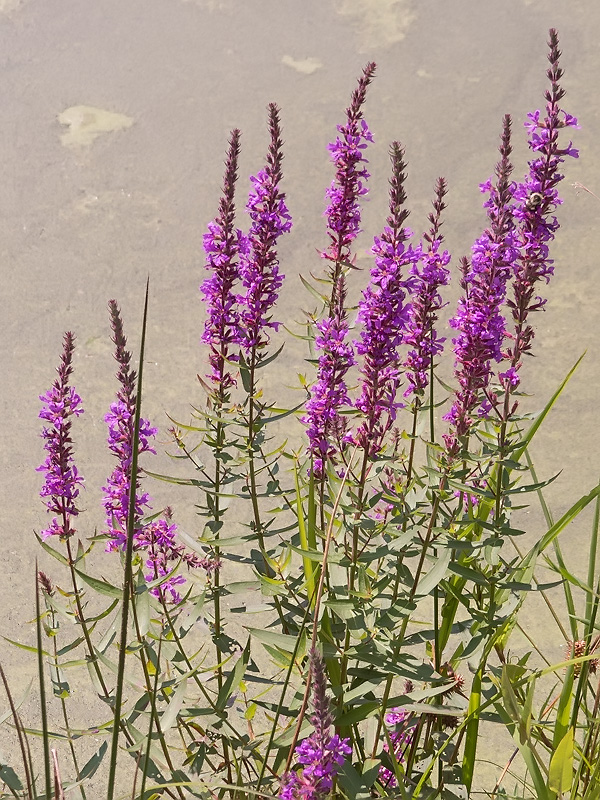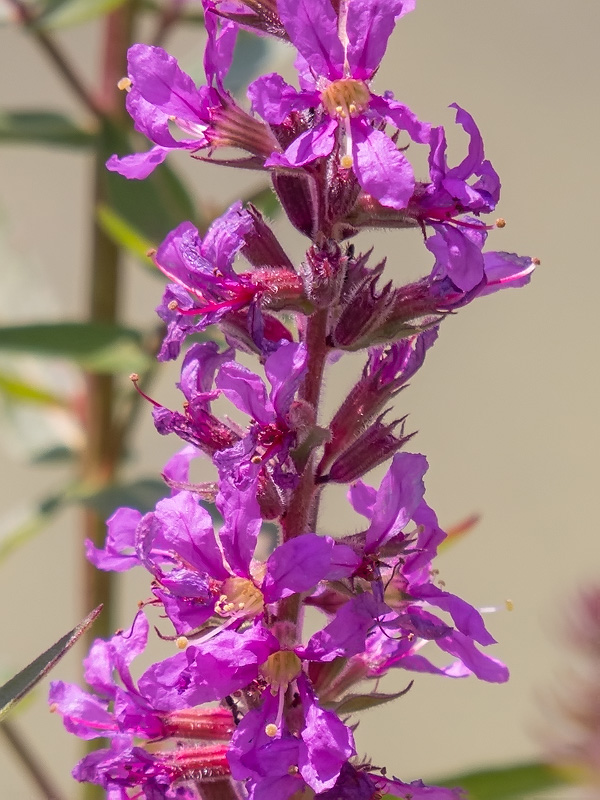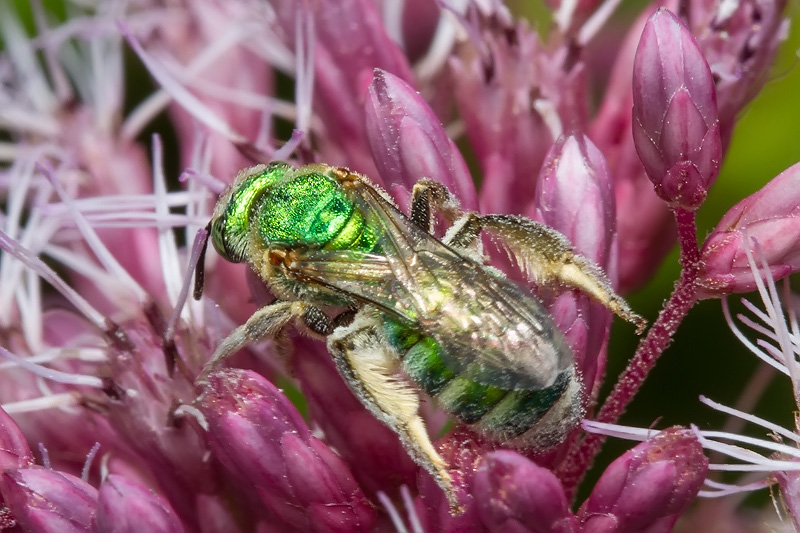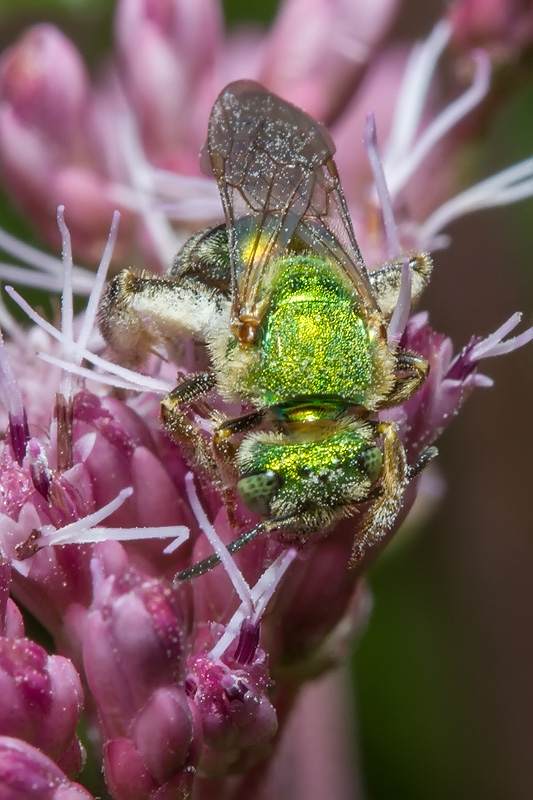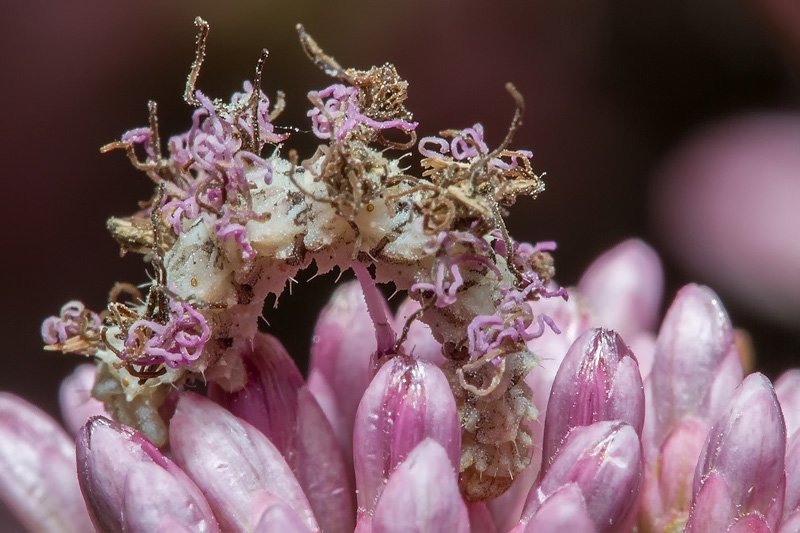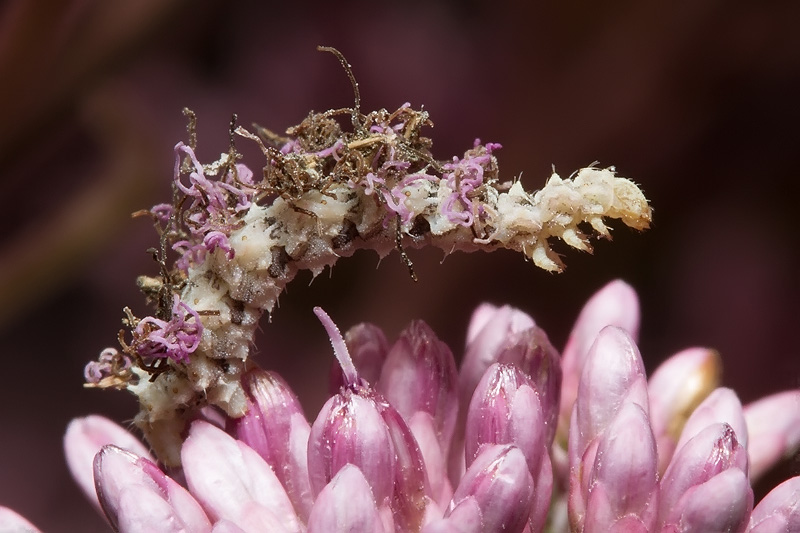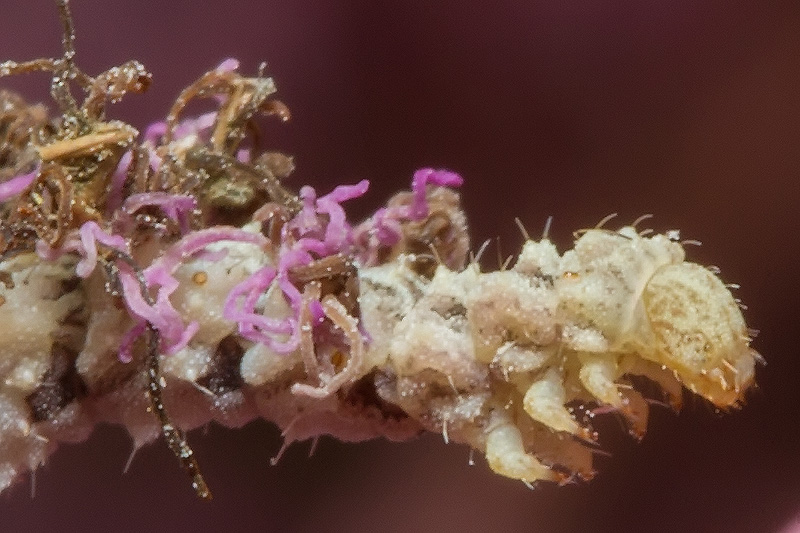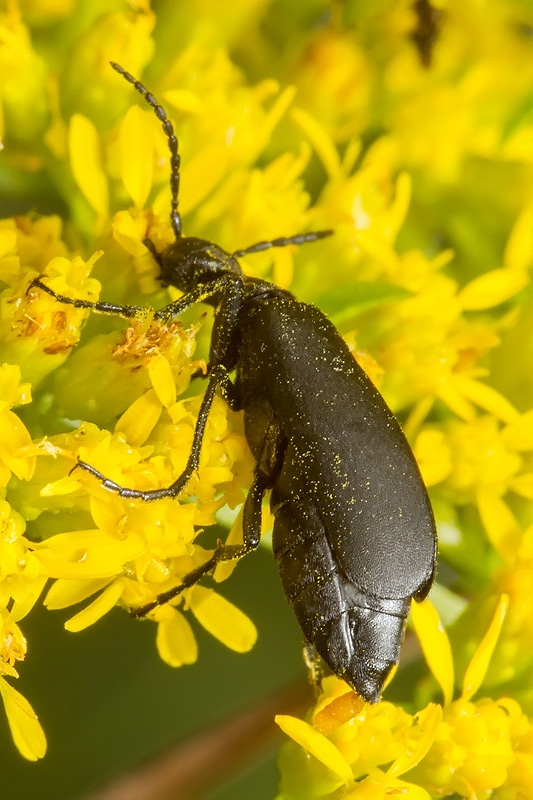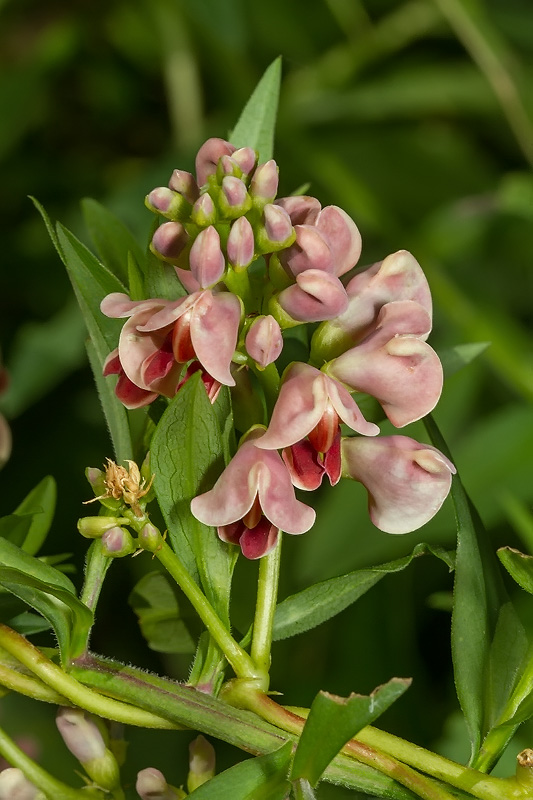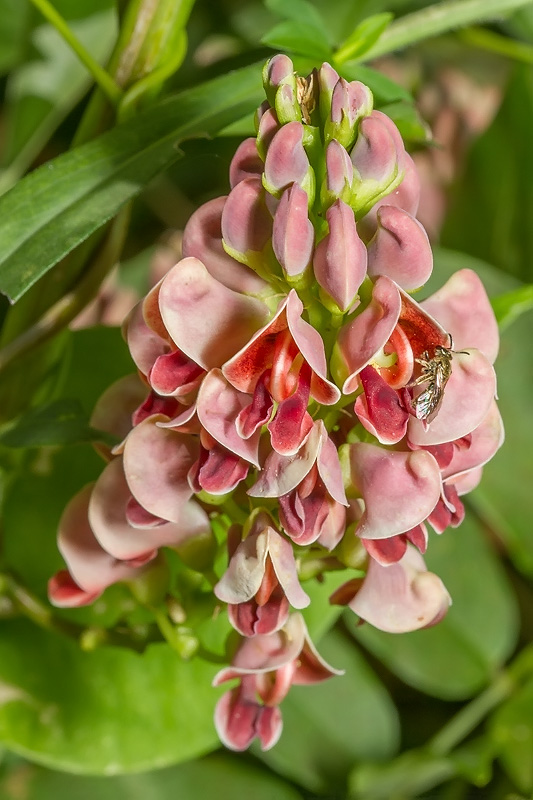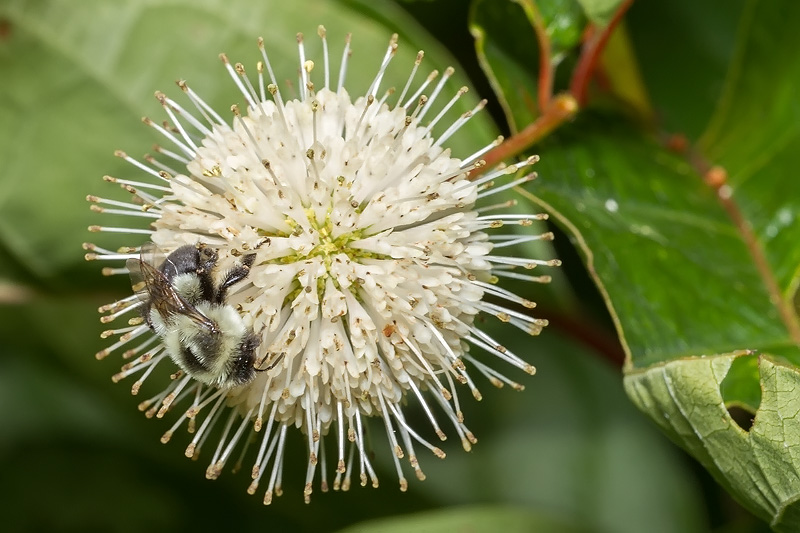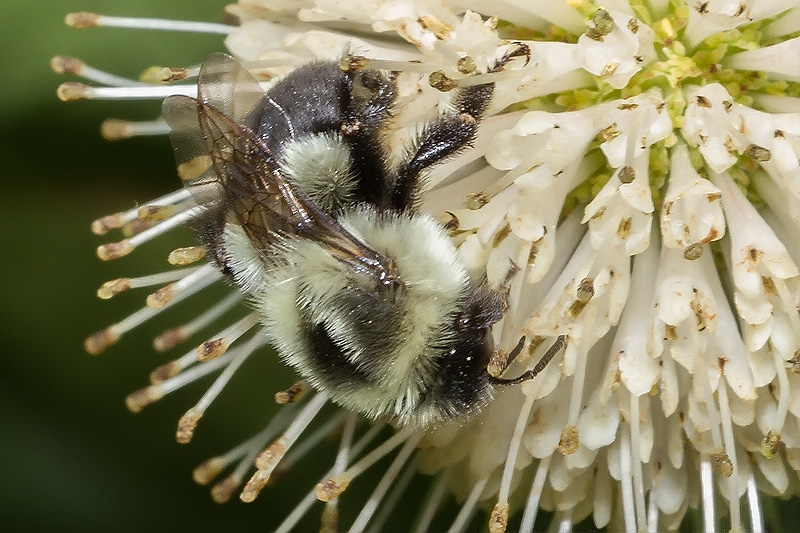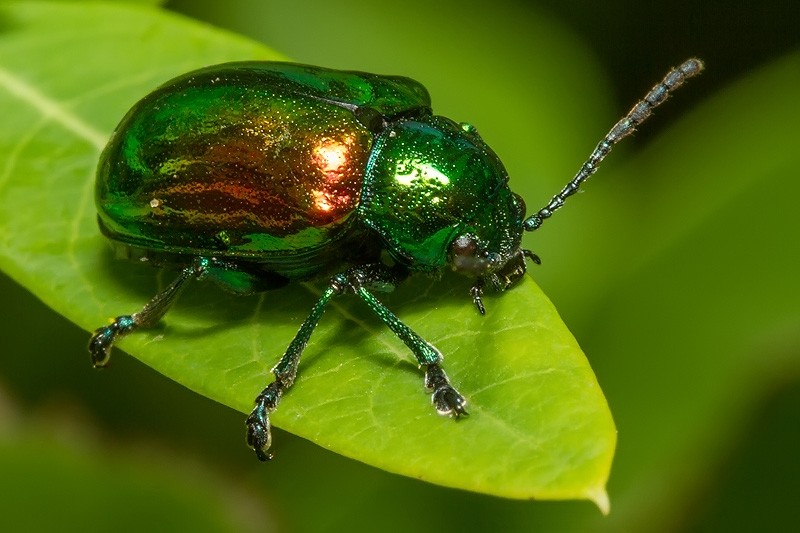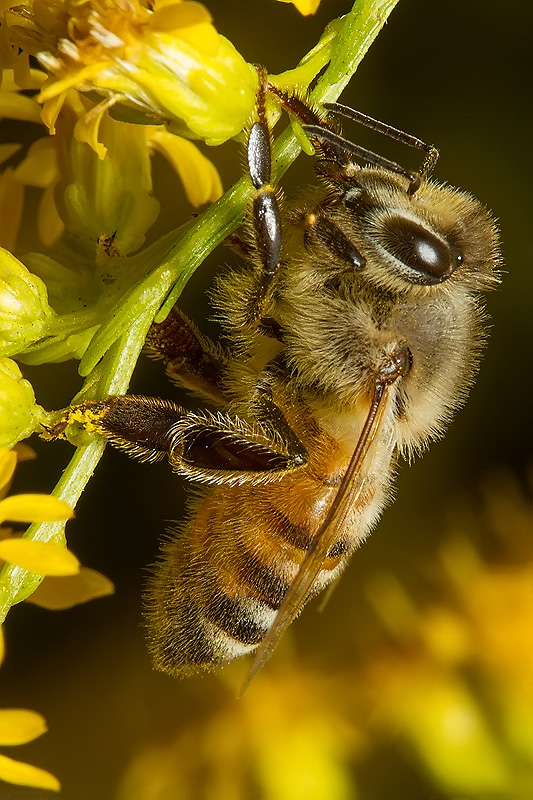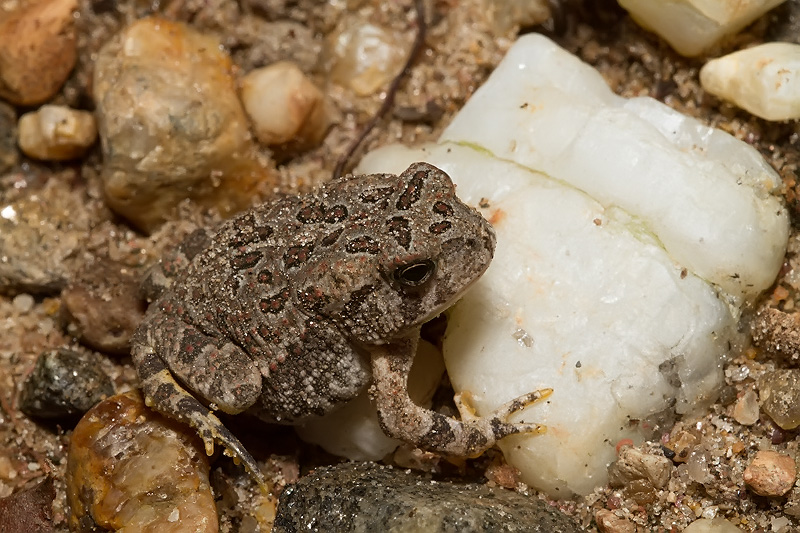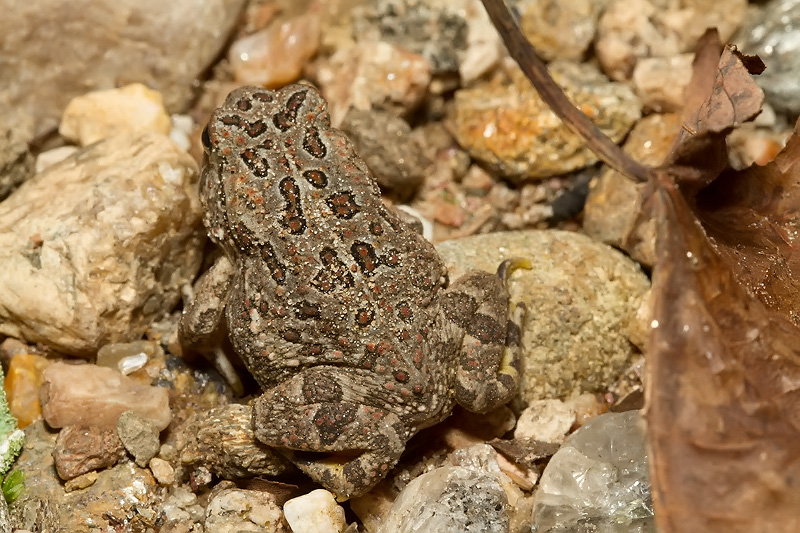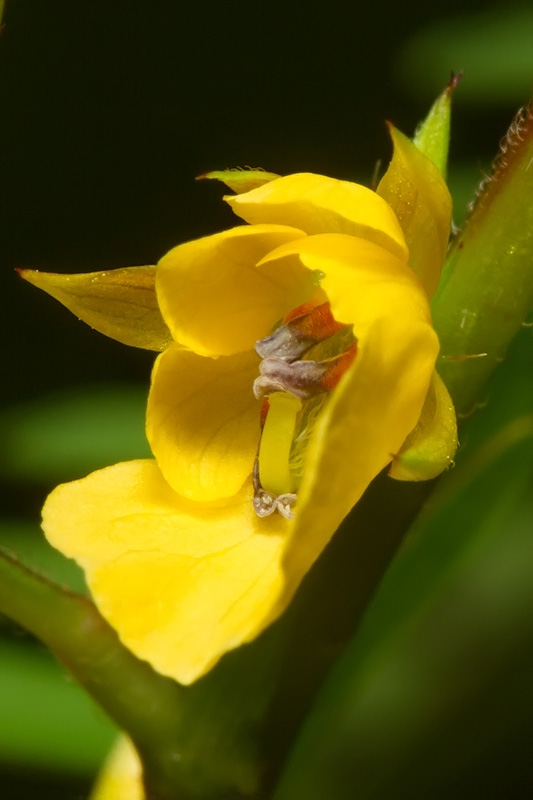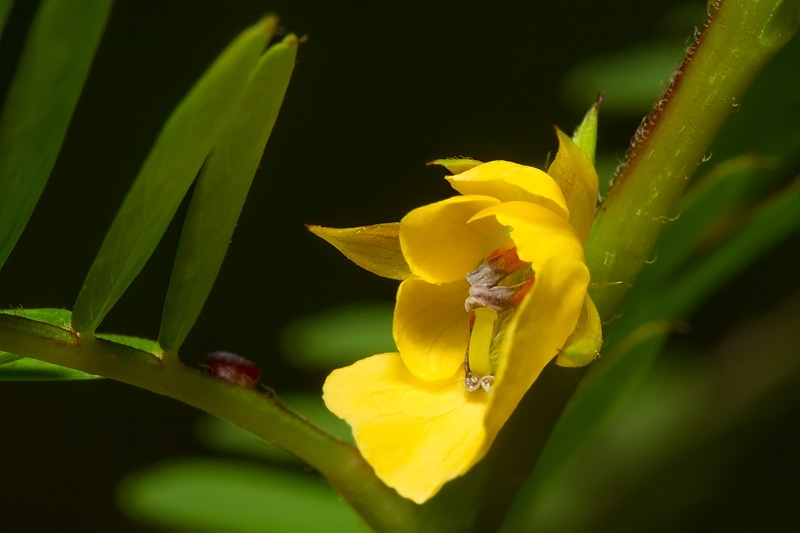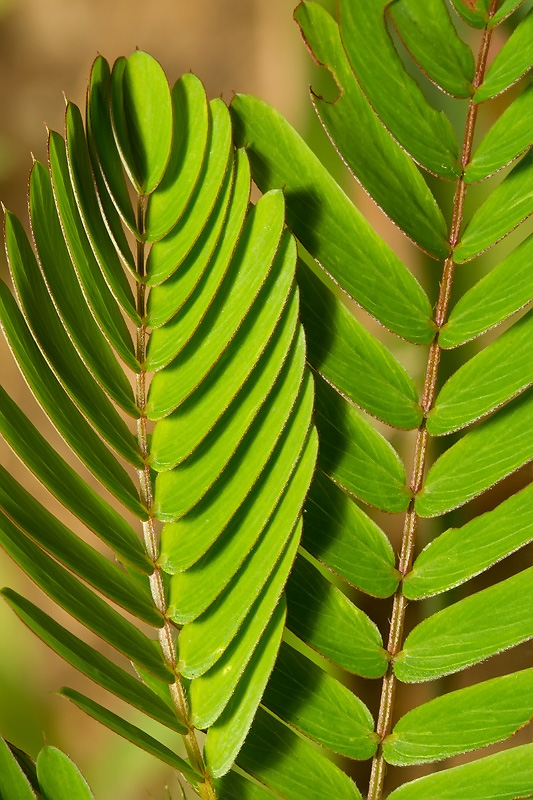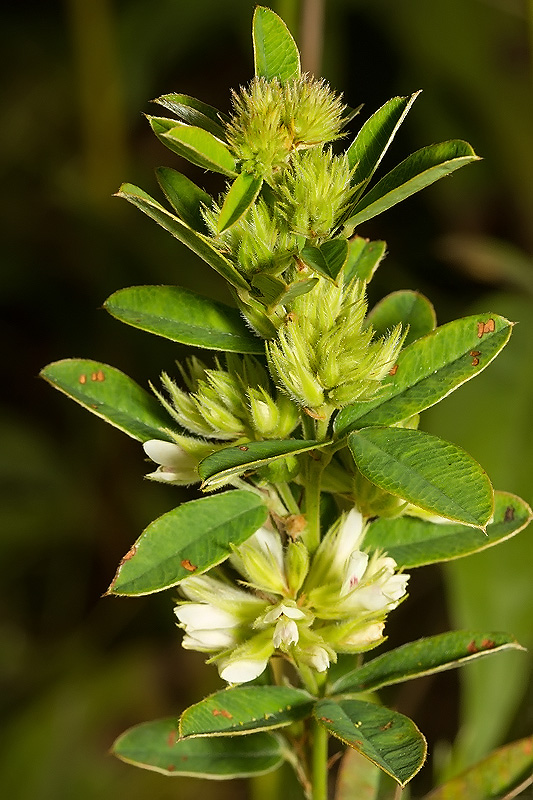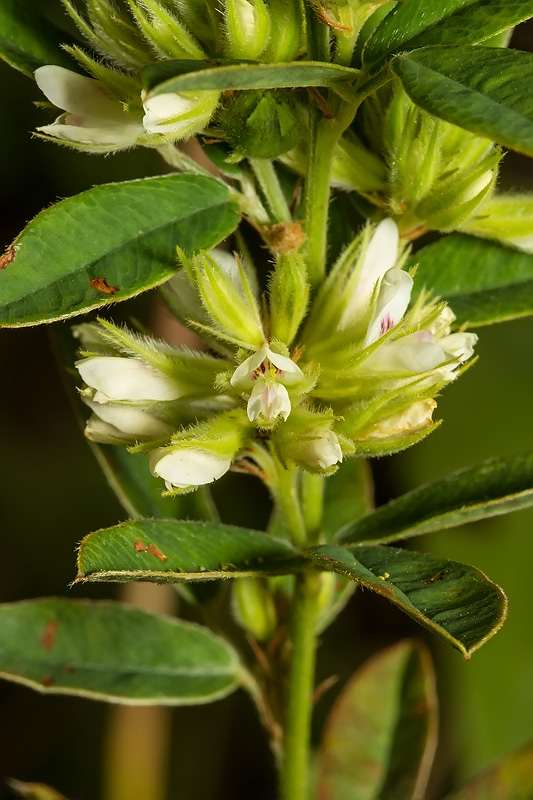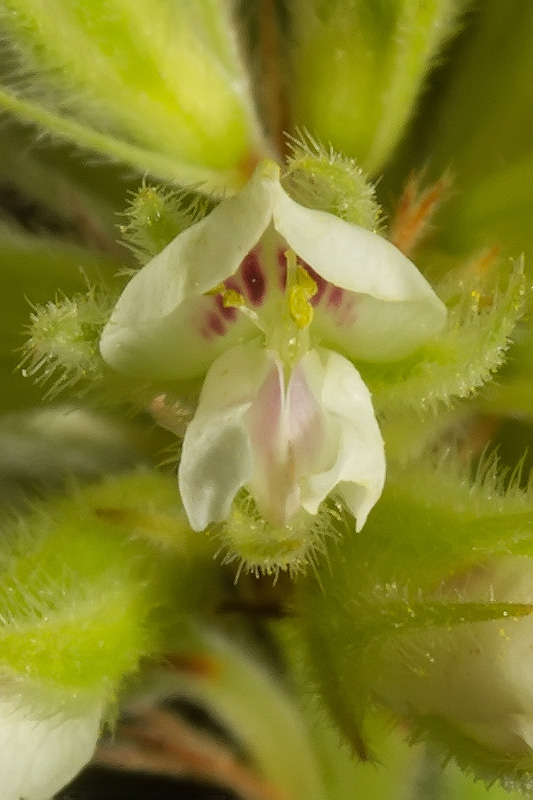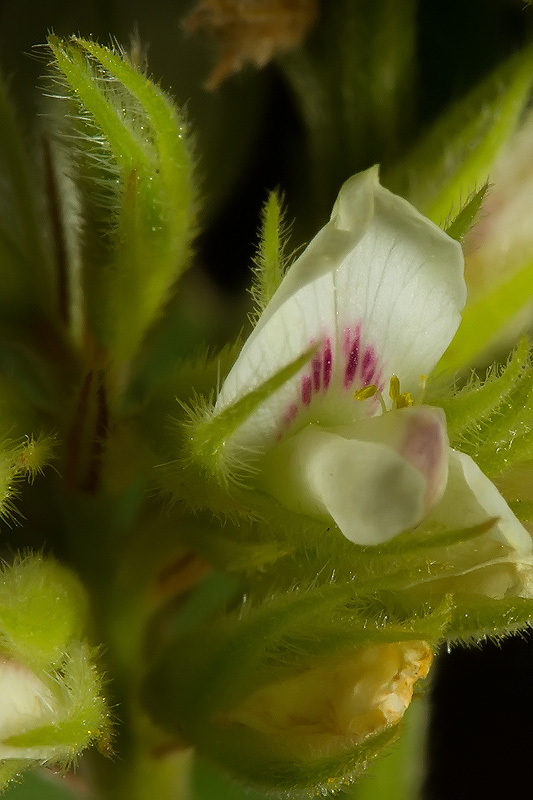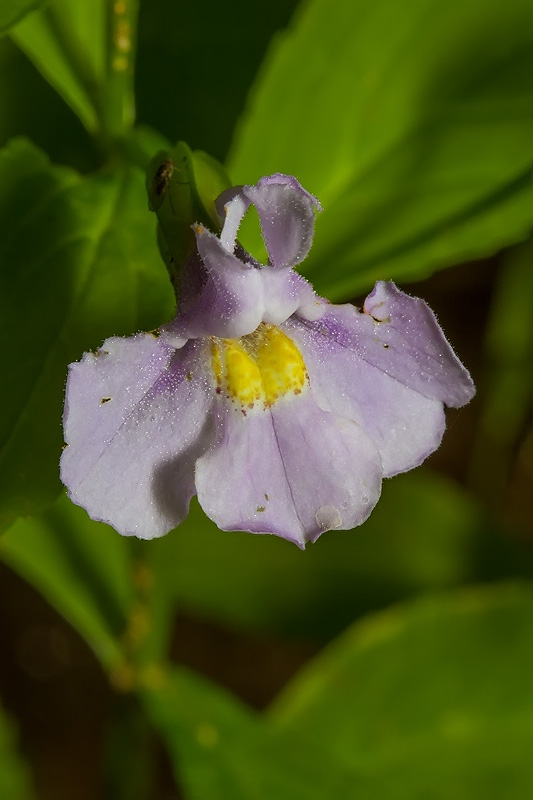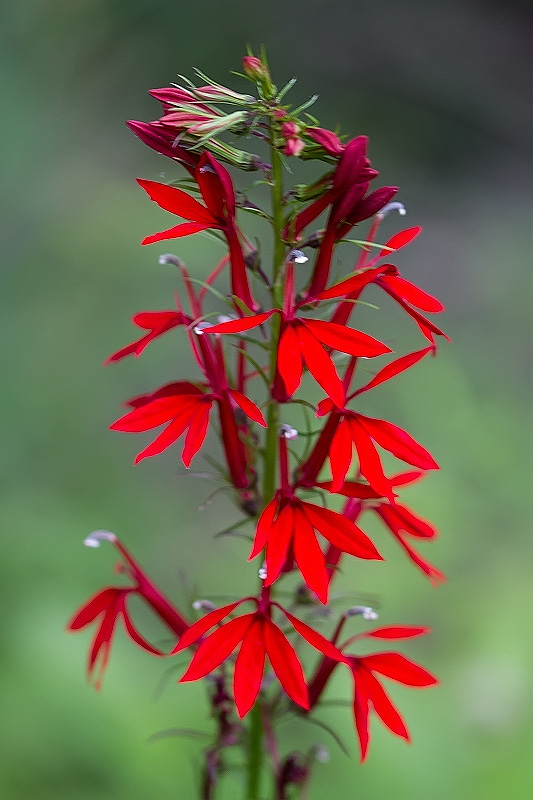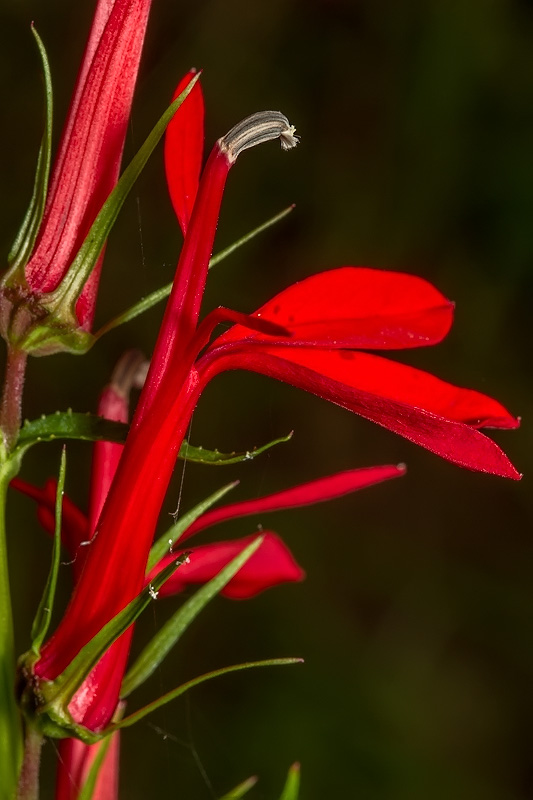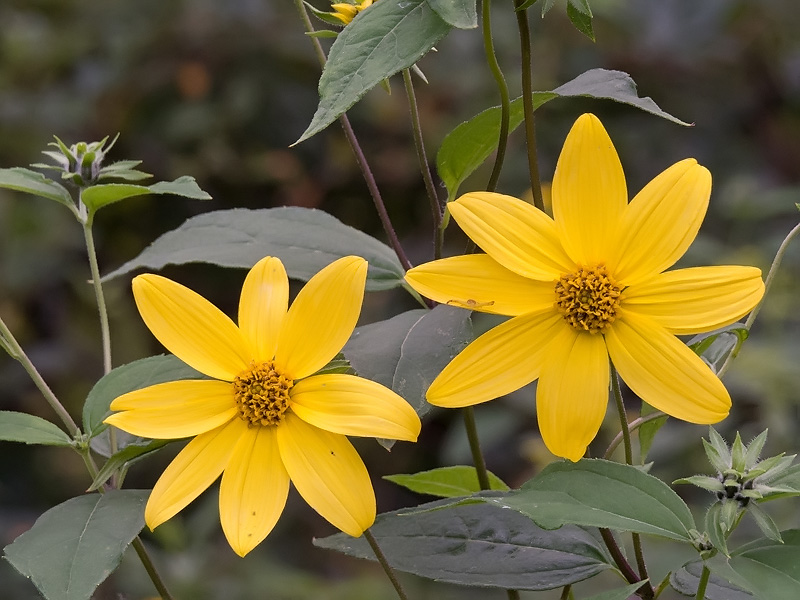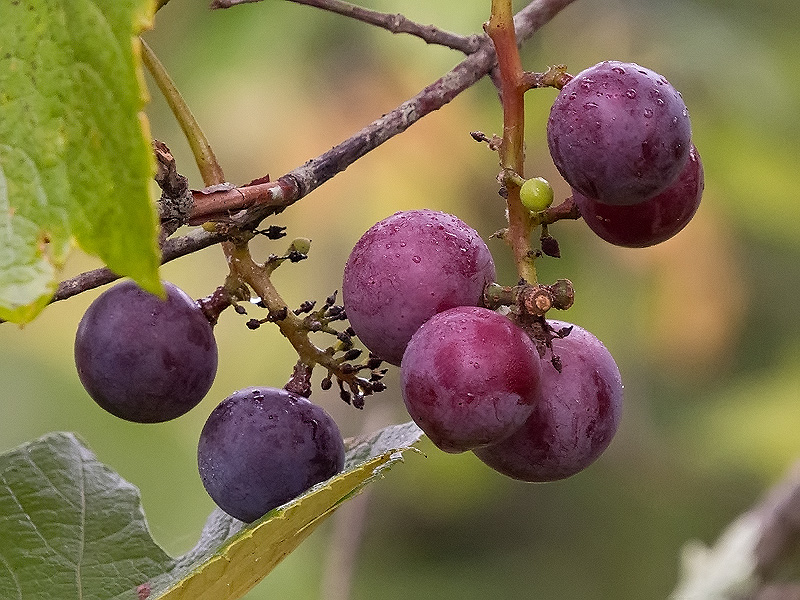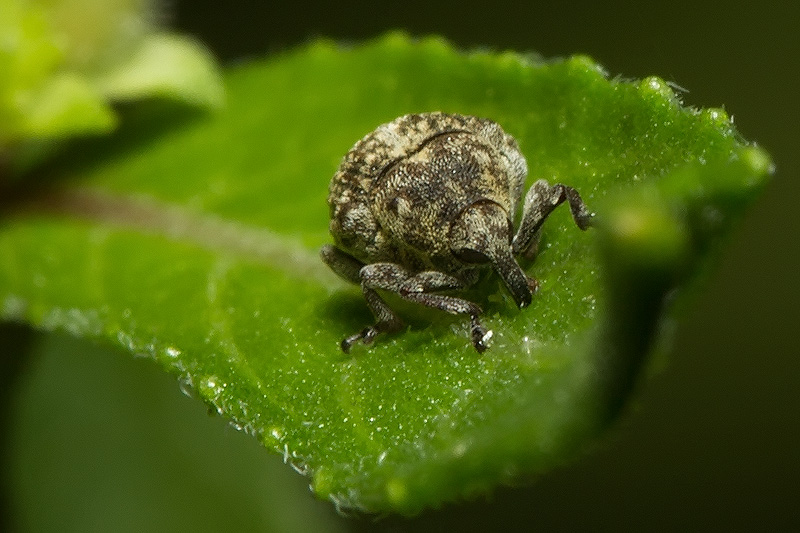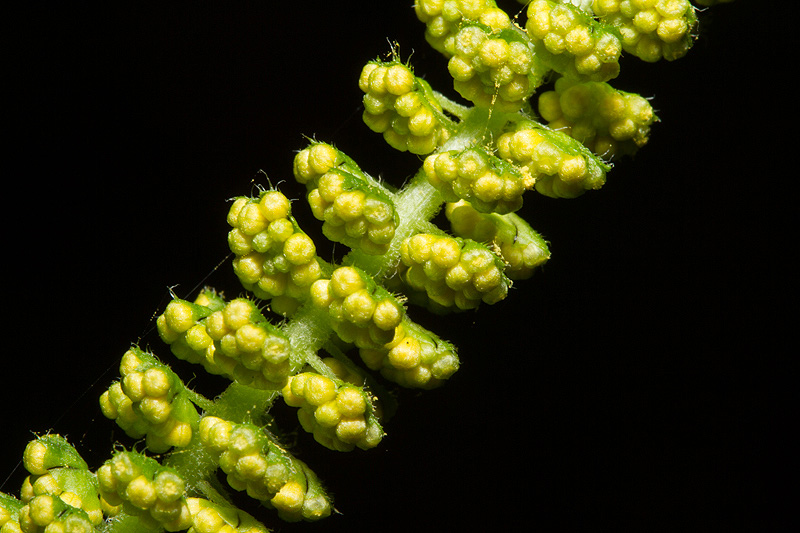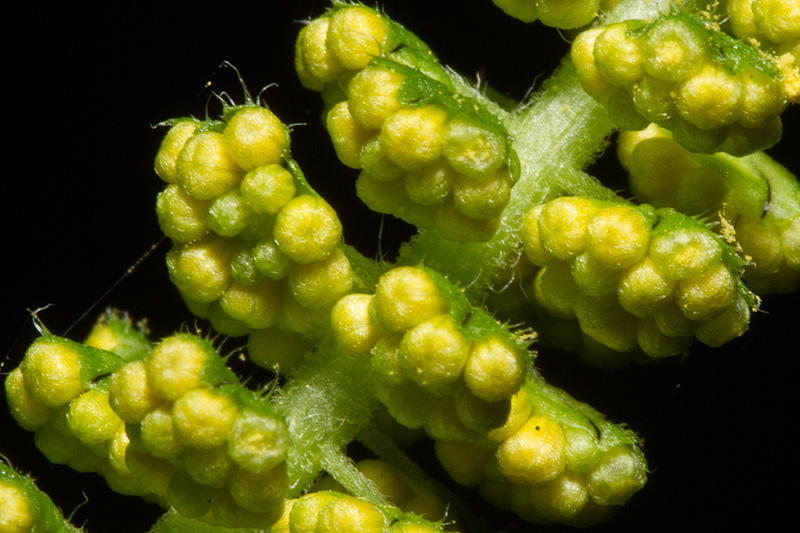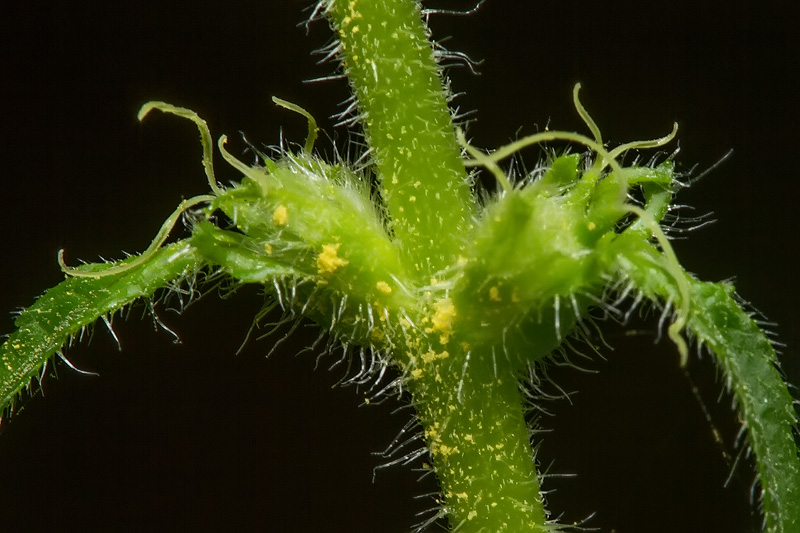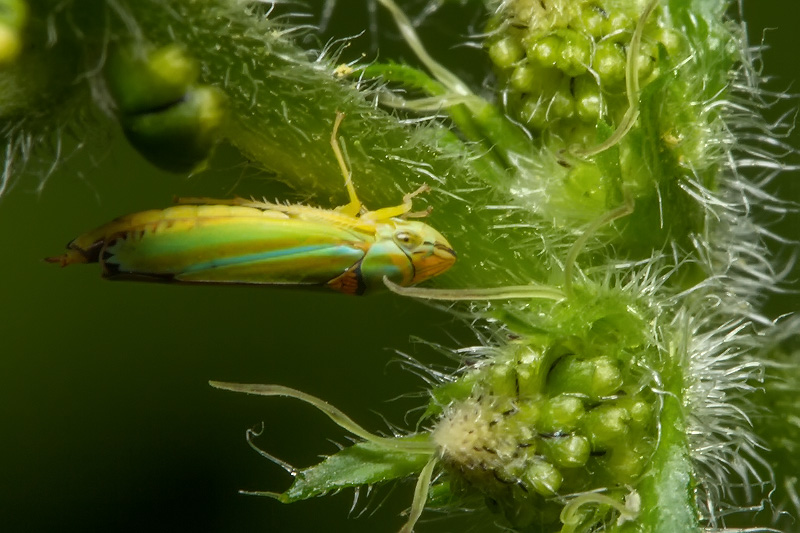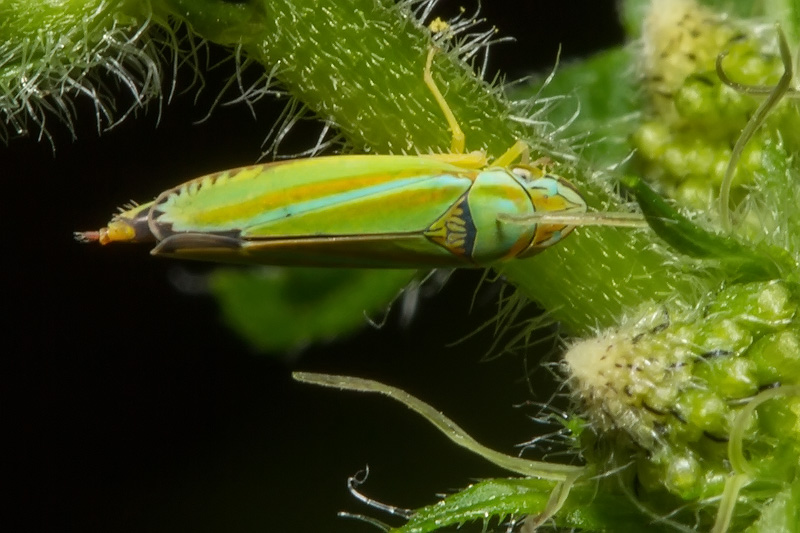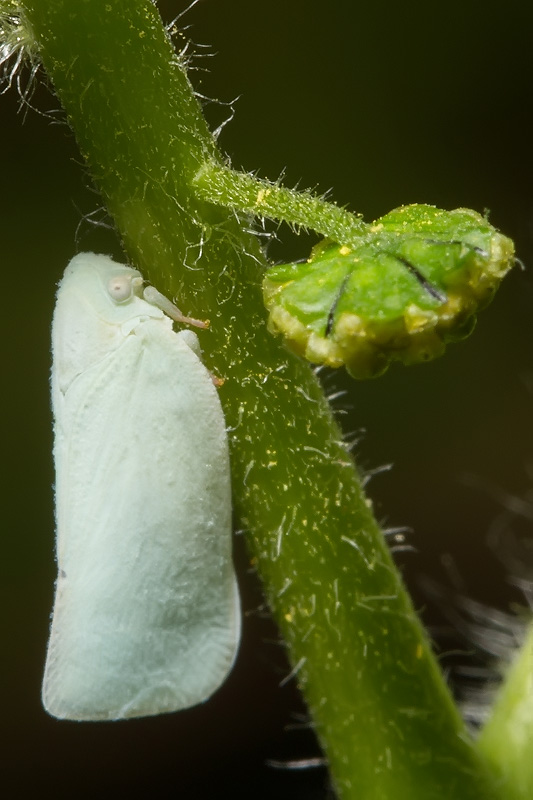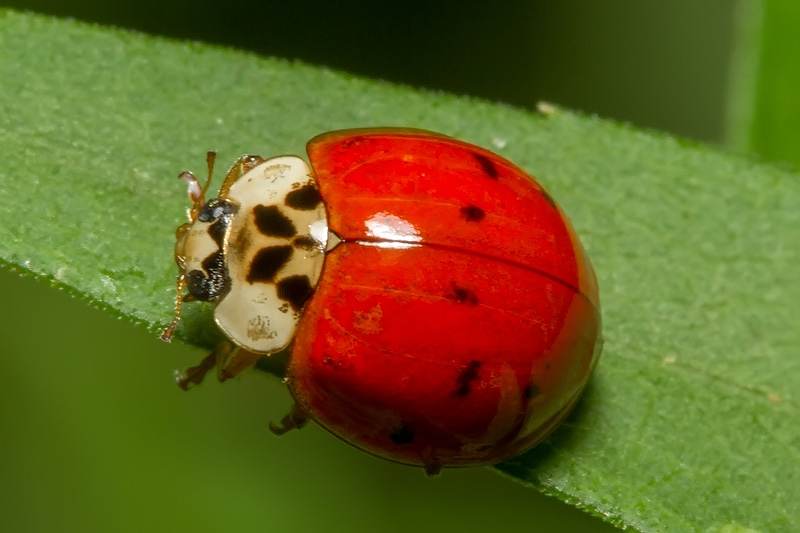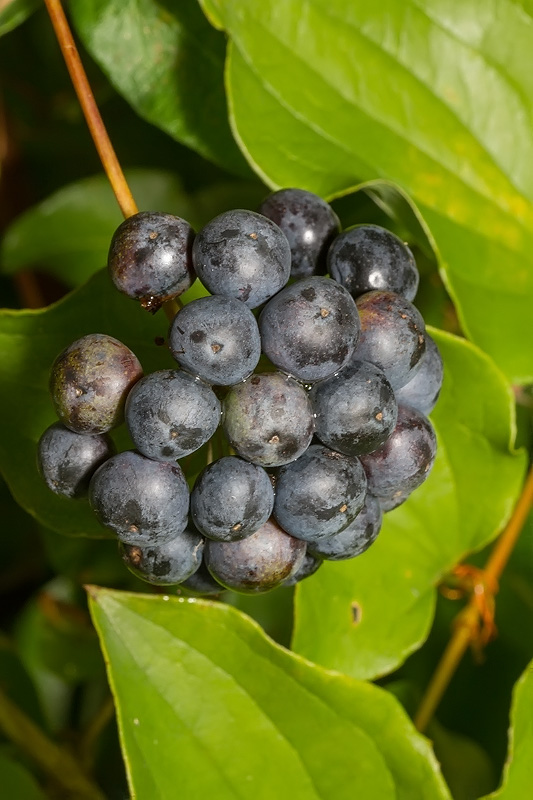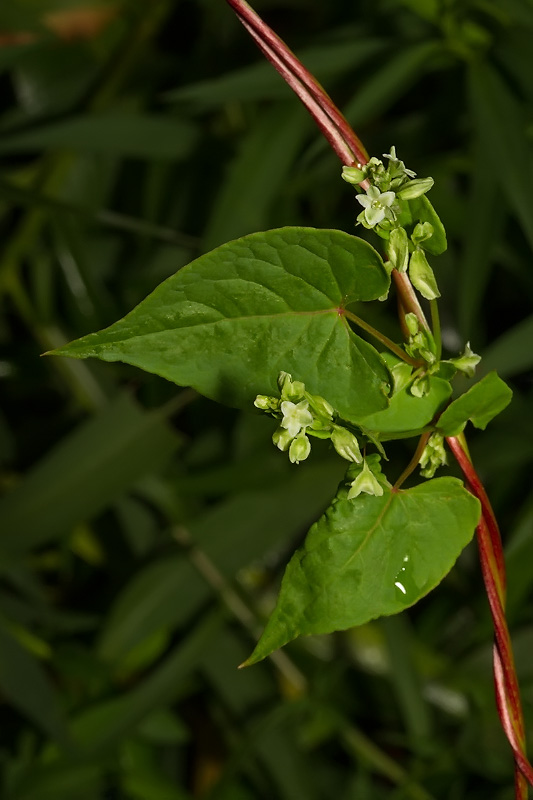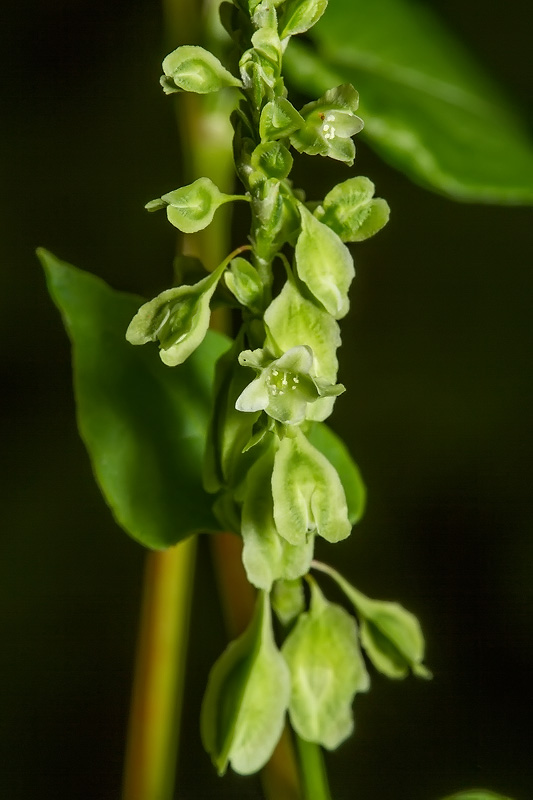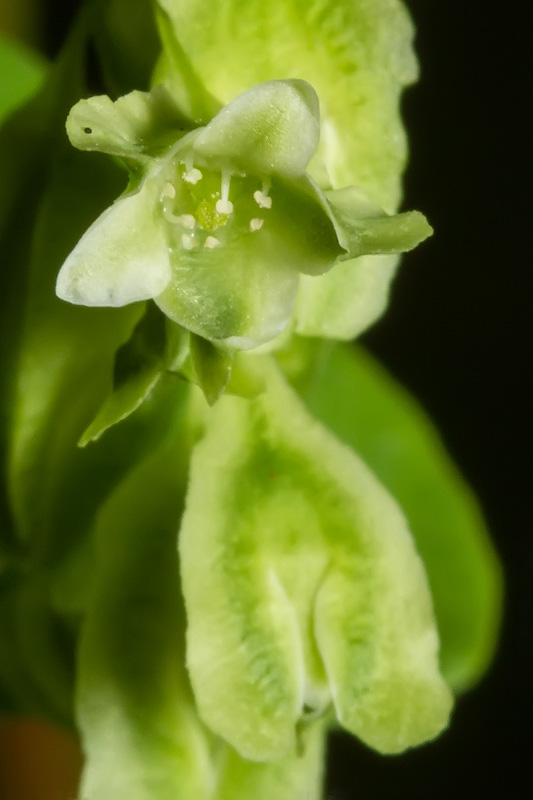Along the Air Line... 2013 - Summer, Part 6 The Air Line Trail in Eastern Connecticut - Stan Malcolm Photos |
mHome Page Stan's FlickR Albums |
August 14th. A few Great Ragweed (Ambrosia trifida) plants grow at the Route 85 trailhead every year. Their inconspicuous flowers spread pollen on the wind like their smaller cousin, contributing to summer allergies. Great Ragweed can reach 15' tall but on the trail the plants are about 4' tall. |
|
August 15th. Riders on Potter the pony and Wizard the gypsy vanner draft horse. What a contrast! |
An Eastern Comma (Polygonia comma) caterpillar on False Nettle (Boehmeria cylindrica), another green flowered plant. Thankfully, False Nettle is free of the stinging hairs found on true nettles (Urtica sp.) - but the two plants could easily be confused. |
The caterpillars have their own means of defense. |
I initially thought this was the caterpillar of a Red Admiral butterfly (Vanessa atalanta) but as it grew larger and changed its color, I realized my mistake. Even at this small stage, I should have noticed that the spines on its head are branched - while Red Admiral head spines are simple. See Summer 2013, part 7 for later pictures.) |
Canada Hawkweed (Hieracium canadense). Toothed leaves get gradually larger as they ascend the stems. |
Climbing Hempweed (Mikania scandens) in bud... |
...in flower... |
...and hosting a male Yellow Jacket wasp (Vespula maculifrons). |
Wild Lettuce (Lactuca sp.) continues to flower and set seed. |
Dodder (Cuscuta gronovii) buds have opened, but the flowers are miniscule. |
|
Virginia Creeper (Parthenocissus quinquefolia) berries aren't quite mature but stand out on their bright red stems. |
At the old distillery site on the Colchester Spur, the recently placed pre-fab small building now has a roof... |
...a row of conifers. and a rock retaining wall. |
August 16th. Virgin's Bower or Wild Clematis (Clematis virginiana) has just started blooming. |
Morning dew on Flat-topped White Aster (Doellingeria umbellata). |
A bright yellow Spotted Apatalodes (Apatalodes torrefacta) caterpillar. |
|
They also come in pale yellow and white. |
|
The Spotted Apatalodes moth is striking for its stance and hairy legs. In a natural setting (versus my fingertip), it resembles a dried up, curled dead leaf. It's related to true silkworm moths in the family Bombycidae. |
August 17th. A brief stop at Cranberry Bog in East Hampton. Lots more Purple Loosestrife (Lythrum virgatum) blooming now: a spreading invasive. |
|
A metallic green Halictid Bee (Agapostemon sp.) on Joe-Pye Weed. |
|
From a distance, this looks like some shriveled up flowers on Joe-Pye Weed. Ah, but look closely! |
It's a Camouflaged Looper (Synchlora aerata), caterpillar of the Wavy-lined Emerald moth. It decorates its body with flower parts of whatever plant it feeds on; thus it looks quite different if it feeds on Goldenrod for example. After a molt, it must replace the camouflage that was shed with the old skin. |
Undecorated head and thorax at the right. Usually, these parts are tucked deep into flowers where it feeds. |
A Blister Beetle, (Epicauta sp.). If handled, they "reflexively bleed" from the leg joints. Their blood causes skin to blister. |
Groundnut (Apios americana), a vine in the pea family. |
|
Seed heads of Queen-Anne's Lace (Daucus carota) have matured. |
Bumblebee on Buttonbush or "Honey-balls" (Cephalanthus occidentalis). |
|
Late afternoon in the meadows near the Blackledge River bridge. Dogbane Beetle (Chrysochus auratus). |
An Ambush Bug nymph (Phymata sp.). |
Honey Bee (Apis mellifera). |
A small American Toad (Bufo americanus). |
|
Wild Sensitive-plant (Cassia nictitans). |
|
|
Round-headed Bush-clover (Lespedeza capitata). |
|
|
|
Monkey Flower (Mimulus sp.). |
Cardinal Flower (Lobelia cardinalis). |
|
One of the Sunflowers (Helianthus sp.). |
August 18th. Concord Grapes (Vitus sp.) are ripening, but not yet sweet. |
A tiny Weevil (Family Curculionidae) on Evening Primrose. |
Great Ragweed (Ambrosia trifida) racemes close up. |
Clusters of male flowers are almost ready to burst with pollen. |
August 19th. Female flowers at the base of the inflorescence. |
A Sharpshooter (Family Cicadellidae). |
|
A Flatid planthopper (Family Flatidae). |
The ubiquitous, invasive Asiatic Ladybird Beetle (Harmonia axyridis). |
The ball of Carrion-flower (Smilax herbacea) fruits. |
Climbing False Buckwheat (Polyganum scandens). |
|
|
